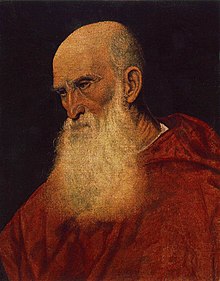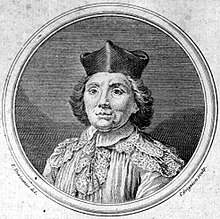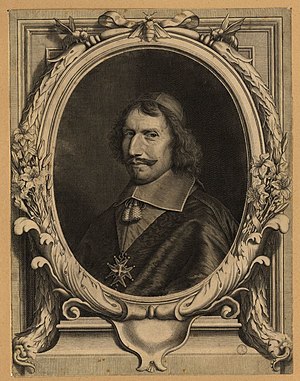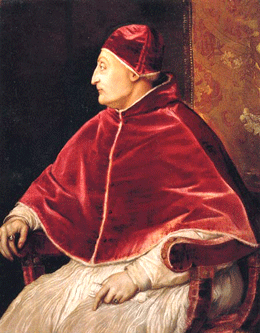(1607-1671)
Cardinal
Italian nobleman, military leader & patron of the arts.
1) Gualtiero Gualtieri.
"A sinister affair concerned Gualtiero Gualtieri---Olimpia's cousin and Giambattista nephew---probably the same youth whose gambling debts she had mentioned in her letter to Gianbattista. Still in his teens, Gualterio entered the service of Cardinal Antonio as a page to learn cultured manners and the courtly way of life. Evidently, he learned other things as well. One day the cardinal called him away from the gaming table to attend him. 'I have him in the ass all night,' the young man cried, slapping down his cards. 'He should at least leave me alone during the day!' The impudent remark flew around Rome like wildfire. Cardinal Antonio was so furious that he sent Gualtiero to the battlefield in Germany to fight Protestants. No sooner had the boy arrived than he was killed on the field, many said shot in the back by an assassin paid by the cardinal. Whether he was murdered or not, his death had certainly resulted from his master sending him to war in a fit of rage. Gianbattista and Olimpia had been extremely fond of the boy and were devastated by his untimely death." (Herman: 84)
(1614-1691)
Italian castrato opera singer
Lover in 1640s
"The nephew of Pope Urban VIII, Antonio Barberini became a cardinal in 1627 at the tender age of twenty. 'The great inclination he has had to women hath been no small blemish to his reputation,' Gregorio Leti wrote, and for once in his life the writer was being kind. Cardinal Antonio was known for his astonishing agility in swinging both ways and caused scandal with both male and female lovers. A sinister affair concerned Gualterio Gualtieri – Olimpia’s cousin and Gianbattista Pamphili’s nephew. Still in his teens, Gualtierio entered the service of Cardinal Antonio as a page to learn cultured manners and the courtly way of life. Evidently, he learned other things as well. One day the cardinal called him away from the gaming table to attend him. 'I have him in the ass all night,' the young man cried, slapping down his cards. 'He should at least leave me alone during the day!' The impudent remark flew around Rome like wildfire. Cardinal Antonio was so furious that he sent Gualtierio to the battlefield in Germany to fight Protestants. No sooner had the boy arrived than he was killed on the field, many said shot in the back by an assassin paid by the cardinal. Whether he was murdered or not, his death had certainly resulted from his master sending him to war in a fit of rage. Gianbattista and Olimpia had been extremely fond of the boy and were devastated by his untimely death." (Herman)
"...Mazarin's chief prize in his efforts to import Roman spectacle into Paris was the appearance of another member of the Barberini court in exile: the famous castrato Marc-Antonio Pasqualini. Antonio Barberini's favorite had been the subject of much gossip in Rome. Playing both male and female roles in Roman sacred operas, Pasqualini was one of the castrated singers who were accused of passive sodomitical behavior or, alternatively, recalcitrant sexual potency...." (Olson: 124)
 |
Cardinal Pamphilij |
Principe di Valmontone.
(1622-1666)
born Camillo Francesco Maria Pamphili
Cardinal Pamphilij.
Husband of: Olimpia Aldobrandini (1623-1681), mar 1674
His lover was:
Leonora Baroni.
 |
| Olimpia Aldobrandini 17th c |
His lover was:
Leonora Baroni.
" . . . Leonora Baroni (1611-70) . . . (was) born to the celebrated singer Adriana Basile. . . As the lover of Camillo Pamphilij, himself nephew of the Spanish candidate, Leonora was well informed. . . ." (Freitas: 5)
Carlo Carafa.
Cardinal.
"In August (1558) an unknown Theatine had felt moved to tell the pope something of Carlo Carafa's immoral life, but the cardinal-nephew talked his way out of the charges made against him , and seems to have regained his uncle's confidence. The unknown Theatine's accusations against Carlo were probably provoked by the rumor which represented him as guilty of the seduction of a young woman of noble rank, Plautilia de' Massimi. Carlo denied it, suggesting that his friend Ranuccio Farnese was to blame." (The Papacy and the Levant, 1204-1571: 711)
.jpg?uselang=it) |
Flavio Cardinal Chigi |
(1631-1693)
Cardinal
1689-1693.
1) Maria Virginia Borghese, Princess Chigi.
"Flavio Chigi (1631-93), nephew of Pope Alexander VII, was perhaps the most powerful person in Rome after the pope himself. He was an intimate friend of the Colonna household, and he and Marie were particularly frequent companions. Marie's great rival for protocolary precedence, the Princess Chigi (Maria Virginia Borghese), is often identified as Cardinal Chigi's sister-in-law, but she was in fact the wife of his cousin, Agostino Chigi. She was also a mistress of Lorenzo, and it was rumored that Marie had become the lover of Cardinal Chigi in revenge. Marie's feelings toward the princess were bitter; this may explain why she makes no mention of her in this memoir, while she does mention the Marquise Paleotti and the Comtesse Stella, both of whom were Lorenzo's mistresses but who were also friends of Marie." (Nelson & Mancini, 2008, p. 120)
2) Marie Mancini.
"First of all came a cardinal, Flavio Chigi, who was ugly to look at, with an olive complexion, a round face, and big eyes which seemed ready to pop out of his head, but he was the nephew of a pope, dissipated and jovial. There was no kind of folly that la Connetable did not make him commit. Once when he was expected to preside over a congregation in a meeting of one of the religious orders, she carried him off in her carriage, 'not more than half dressed,' took him out of the city, and kept him until nightfall. Another time she surprised him, still in bed, took possession of his clothes, dressed herself as a cardinal, and wanted to give an audience in his place to those waiting in his ante-chamber. Another time they went together on a hunting party which lasted a fortnight, during which they camped out in the woods." (The Living Age, Vol 187: 478)
"Flavio Chigi (1631-93), nephew of Pope Alexander VII, was perhaps the most powerful person in Rome after the pope himself. He was an intimate friend of the Colonna household, and he and Marie were particularly frequent companions. Marie's great rival for protocolary precedence, the Princess Chigi (Maria Virginia Borghese), is often identified as Cardinal Chigi's sister-in-law, but she was in fact the wife of his cousin, Agostino Chigi. She was also a mistress of Lorenzo, and it was rumored that Marie had become the lover of Cardinal Chigi in revenge....." (Nelson &Mancini, 2008, p. 120)
Personal & Family Background: Flavio was the son of Mario Chigi amd Benerenice della Ciaia, and nephew of Pope Alexander VII.
Gian Francesco Albani.
Cardinal.
"Donna Marianna's marriage was solemnised in the chapel of the Barberini Palace, Cardinal Gian Francesco Albani, the avowed lover of the bridegroom's mother---although he was quite an old man---pronouncing the nuptial benediction. Then refreshments were served to the distinguished guests, and the happy pair set off for Oriolo, a fief of the Altieri family, ten miles beyond Bracciano. But, contrary to all our present-day notions, they did not go alone. The entire house of Altieri followed them, Cardinal Vincenzo and Monsignor Girolamo alone remaining in Rome, and they went to pay teir respects almost immediately. (Rome, Its Princes, Priests and People, Volume 2: 69)
 |
| Pietro Cardinal Bembo |
(1470-1547)
Cardinal
[Ref1:330]
Son of: Bernardo Bembo & Elena Morosini.
Cardinal Bembo's personal & family background: " . . . Pietro Bembo (born at Venice 1470; died at Rome 1547), was the son of a noble Venetian, Bernardo Bembo (a man of much cultivation, who paid for the restoration of Dante's tomb at Ravenna), and Elena Marcella. Having received his early education at Florence, where his father was Venetian ambassador, he studied Greek at Messina under Lascaris (a native of Hellas, whose grammar of that tongue was the first Greek book ever printed, 1476), and philosophy at Padua and Ferrara, where his father was Venetian envoy and introduced him to the Este court. Here he became acquainted with Lucrezia Borgia, who had recently wedded Duke Ercole's son Alfonso, and to whom he dedicated his dialogues on love, Gli Asolani. By some writers indeed he is said to have been her lover, but the report is hardly confirmed by the character of the letters exchanged between the two, 1503-1516. Having been entertained at Urbino in 1505, he spent the larger part of the next six years at that court, where he profited by the fine library, delighted in many congenial spirits, and became the close friend of Giuliano de' Medici, who took him to Rome in 1512 and recommended him to the future pope, Leo X. On attaining the tiara, Leo at once appointed him and his friend Sadoleto. . . papal secretaries, an office for which his learning and courtly accomplishments well fitted him. His laxity of morals and his paganism were no disqualification in the eyes of the pope, whom he served also in several diplomatic missions, and from whom he received benefices and pensions sufficient to enrich him for life. . . ." (The Book of the Courtier: 329-330)
"In 1458, in Florence, Bernardo fell in love with another beautiful girl, but in 1462 he did his duty and married a member of the Venetian aristocracy, Elena Morosini. She was the mother of Pietro and the two other legitimate children. There is a suggestion that she may have been Bernardo's second Venetian wife, that he may have married a girl of the Marcello family who died soon after the marriage. . . ." (Pietro Bembo: Lover, Linguist, Cardinal: 5-6)
His lovers were:
 |
| Lucrezia Borgia |
1) Lucrezia Borgia, Duchessa di Ferrara.
"In 1502 and 1503 he was again in Ferrara, and had a love affair with the notorious Lucrezia Borgia, who was the wife of Alfonso d'Este...." (Wikipedia)
Pietro Bembo, a Renaissance cardinal born in Venice in 1470 who wrote one of the earliest Italian grammars...was widely known for his poetry, also paid amorous homage to the beauties of blonde hair. Gli Asolani, his treatise on the torments and joys of men's love for women, was published in 1505 and dedicated to his mistress, the blonde Lucrezia Borgia, Duchess of Ferrara." (Pitman, 2004, pp. 71-72)
2) Morosina (fl. 1525)
Also known as La Morosina.
Natural offspring:
1. Elena
2. Lucilio
3. Torquato
" . . . Nor was it less esteemed by reason of the presence, at its head, of an avowed mistress (Morosini), who bore him several children. After her death, he devoted himself to theology, entered holy orders, reluctantly accepted a cardinal's hat in 1539, and in 1541 succeeded his friend Fregoso in the bishopric of Gubbio, to which was added that of Bergamo. His death was occasioned by a fall from his horse, and he was buried at Rome in the Minerva church, between his patrons Leo X and Clement VII. . . ." (The Book of the Courtier: 330)
(1689-1740)
Italian cardinal, artistic patron & connoisseur.
Bishop of Sabina.
[Ref1:Olszewski]
"By all accounts, Cardinal Pietro Ottoboni - - grandnephew of Pope Alexander VIII -- loved 'pomp, prodigality and sensual pleasure.' Apparently, portraits of his mistresses disguised as saints . . . decorated his bedroom. And he seems to have had lots of mistresses, as he sired between 60 and 70 children. . . But Cardinal Ottoboni was not merely chasing the pretty skirts of Europe; he was also surrounding himself with an extended circle of homosexual artists, among them Arcangelo Corelli." (70 Children and Counting! Cardinal Ottoboni and Arcangelo Corelli)
Personal & Family Background: "...Ottoboni, doyen, nephew of [Pope] Alexander VIII, Venetian, protector of France, made cardinal at seventeen or eighteen years, without morals, without repute, debauched, decadent, lover of the arts, and a fine musician...." (Harris, 2001, pp. 41-42)
Physical Traits and Personal Character: "Cardinal Pietro Ottoboni (1689-1740) was one of the greatest artistic patrons and connoisseurs of the eighteenth century.... Certainly the cardinal did not maintain his vow of celibacy, if this is meant to imply abstaining from sexual relations rather than, as sometimes in this period, simply remaining unmarried...." (Harris, 2001, p. 42)
His lovers were:
 |
| Andrea Adami |
1) Andrea Adami di Bolzena (1663-1742)
Castrato, author, composer, singer, maestro de capella.
Priest at Santa Maria Maggiore
Master of the Papal Choir (1700)
"...However, Ottoboni's constant companion was Andrea Adami (1663-1742), castrato, author, and from 1700 to 1714 maestro de cappella of the Sistine Chapel. According to Velasio, Adami was Ottoboni's 'favoritissimo.' The cardinal nourished a particular affection for Adami, protected and recommended him on diverse occasions, and gave him a number of magnificent paintings...." (Harris, 2001, p. 42)
"...According to Valesio, Adami was Ottoboni's 'favoritissimo.' The cardinal nourished a particular affection for Adami, protected and recommended him on diverse occasions, and gave him a number of magnificent paintings...." (Harris, 2001, p. 42)
2) Margherita Pio Zeno (1670-1725)
"...For about twenty years he maintained a relationship with Margherita Pio Zeno of Savoy (1670-1725), to whom his love letters survive...." (Harris, 2001, pp. 42-43)
His lovers were:
1) Pope Sixtus IV.
"As Pope, says the Catholic Encyclopedia, Sixtus 'fell more and more under his dominating passion of nepotism, heaping riches and favours on his unworthy relations.' He gave cardinal's hats to his sexually profligate nephews Giuliano della Rovere and Pietro Riario, as well as to Sanseverino (loose and worldly), Giovanni Cibo (the father of several illegitimate children, Venier (loose and luxurious), Ascanio Sforza (more passionate about hunting and gambling than about the Church, and notoriously loose), Christoforo della Rovere (another loose nephew), Battista Orsini (whose mistresses were the worst-kept secret in Rome, and Savelli, Sclafenati, and Giovanni Colonna (all of whom were secually profligate and luxury-loving)." (August 9: The Terrible Sixtus)
"Sixtus vigorously restored the secular rule of the Papacy and encouraged the artistic and cultural development, but his nepotism was shameless and profoundly harmful. One of the nephews whom he drew from the obscurity of a Franciscan monastery and made a prince of the Church was Pietro Riario, who spent 200,000 ducats, and within two years of his promotion wore out his life in the most flagrant dissipation. His immense palace, with its magnificent treasures, its five hundred servants in scarlet silk, and its prodigious banquets, was the home of every species of vice; and it is said tha his chief mistress, Tiresia, flaunted eight hundred ducats' worth of pearls on her embroidered slippers. . . ." (Crises in the History of the Papacy: 246)
2) Therezia Fulgora.
2) Therezia Fulgora.
Also known as Tiresia Fulgora.
" . . . Pietro wore gold-laden clothes; he kept a mistress, Tiresia, who wore expensive pearl slippers. . . ."
" . . . Peter also obtained a cardinal's hat, and an annual pension of a million five hundred thousand crowns of gold, an enormous sum for the times, and which, however, was barely sufficient to maintain the luxuriousness of the courtezan (sic) Theresa Fulgora, his mistress. Happily for the people, this depraved woman, who had already abandoned herself to the caresses of all the debauchees of Rome, was taken with a terrible disease, with which she infected her lover, and after two years of horrid sufferings, Peter died, a victim of his debauchery. . . ." (The Public and Private History of the Popes of Rome, Vol 2 : 139)
"Michaelangelo's Sixtus IV, the lover of his handsome nephew Pietro Riario, whom he made a cardinal at the age of twenty-five and upon whom he lavished unheard of wealth, so that his extravagance was compared to a Roman emperor's. Sixtus is repeatedly called a 'sodomite' in the diaries of Stefano Infessura, a charge usually discounted by modern historians since Infessura was 'an ardent republican and the pope's political enemy.' But a century ago John Addington Symonds pointed out that the accusation appears also in the dispatches of the Venetian ambassador and is confirmed by the usually reliable diaries of Johann Burchard, the papal master of ceremonies." (Crompton: 278)
"At age twenty-six Pietro was elevated from his friary and made a cardinal. To assure a lavish income, Sixtus gave him bishoprics and abbeys, but even this was not enough. Pietro wore gold-laden clothes; he kept a mistress, Tiresia, who wore expensive pearl slippers. When he entertained Leonora of Naples in 1473, the banquet lasted six hours – in a palace he had built for the day. The randiest youths and most expensive prostitutes were guests at his palace, where the several hundred servants wore silk. This kind of life he couldn’t sustain, and he ran down his health as fast as he ran through his money, leaving the Pope in debt." (Freethought Almanac)
Cardinal Sins.
"The Cardinal Peter riario, his nephew or son, died at the age of twenty-eight, ruined by excesses which were not very decent, particularly in an ecclesiastic. His prodigality and dissipation were scandalous, and were carried so far as to give his mistress shoes covered entirely with pearls. He was only two years cardinal, in which he spent 200,000 dollars, and left 60,000 of deb. . . ." (Pignotti: 225)
References
[Bio1]
[Bio2]








No comments:
Post a Comment